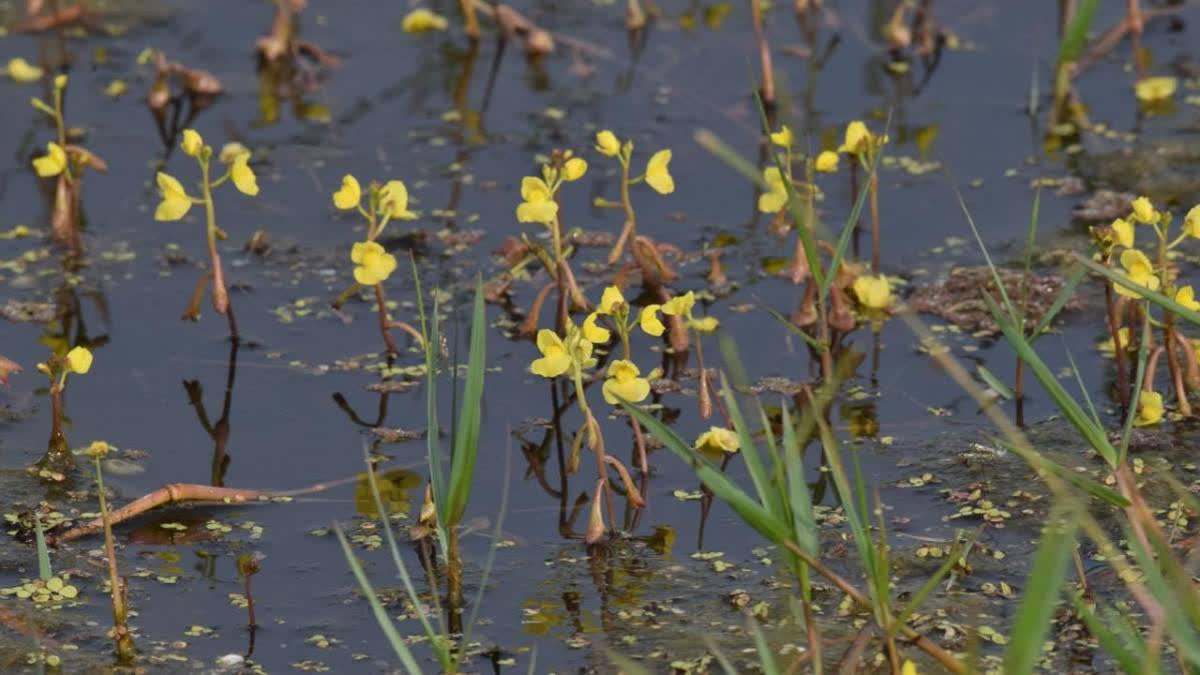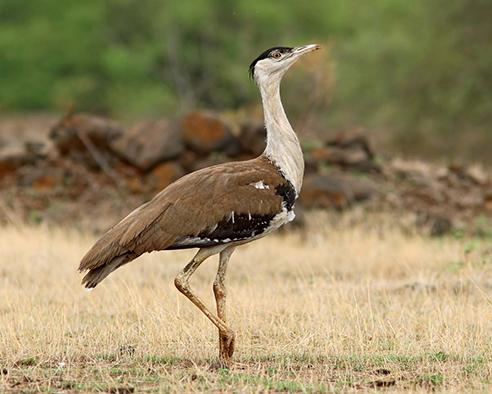Utricularia Found in Keoladeo National Park | Rajasthan | 17 Jan 2025
Why in News?
Recently, a rare and unique carnivorous plant, 'Utricularia,' has been discovered in Rajasthan's Keoladeo National Park.
- Commonly known as bladderworts, this plant is typically found in regions like Meghalaya and Darjeeling.
Key Points
- Role in Biodiversity:
- Experts believe the presence of bladderworts in the park enhances biodiversity and positively contributes to the ecosystem of Keoladeo.
- Utricularia plays a vital role in maintaining environmental balance by capturing small insects.
- It was last discovered in India in 2021 in the Mandal Valley of Chamoli, Uttarakhand, after a 36-year gap.
- Feeding Mechanism:
- The plant entraps creatures such as protozoa, insects, larvae, mosquitoes, and tadpoles in its bladder-like traps.
- Once trapped, the organism dies inside the bladder.
- Terrestrial species of Utricularia thrive in soil filled with water, where they capture small swimming creatures.
- The plant entraps creatures such as protozoa, insects, larvae, mosquitoes, and tadpoles in its bladder-like traps.
- Ideal Growth Conditions:
- The growth of Utricularia is due to the abundant water supply from the Panchana Dam, which creates ideal conditions for the plant’s growth.
Keoladeo National Park
- About:
- It is a wetland and bird sanctuary and a UNESCO World Heritage Site located in Bharatpur, Rajasthan.
- Chilika Lake (Orissa) and Keoladeo National Park (Rajasthan) were recognized as the first Ramsar Sites of India in 1981.
- Currently, Keoladeo National Park and Loktak Lake (Manipur) are in the Montreux Record.
- It is known for its rich avian diversity and abundance of waterbirds and is home to over 365 species of birds, including several rare and threatened species, such as the Siberian crane.
- It is a wetland and bird sanctuary and a UNESCO World Heritage Site located in Bharatpur, Rajasthan.
- Fauna:
- Flora:
- The principal vegetation types are tropical dry deciduous forest dominated by Acacia nilotica intermixed with dry grassland.
- River:
- Gambhir and Banganga are two rivers that flow through this National Park

